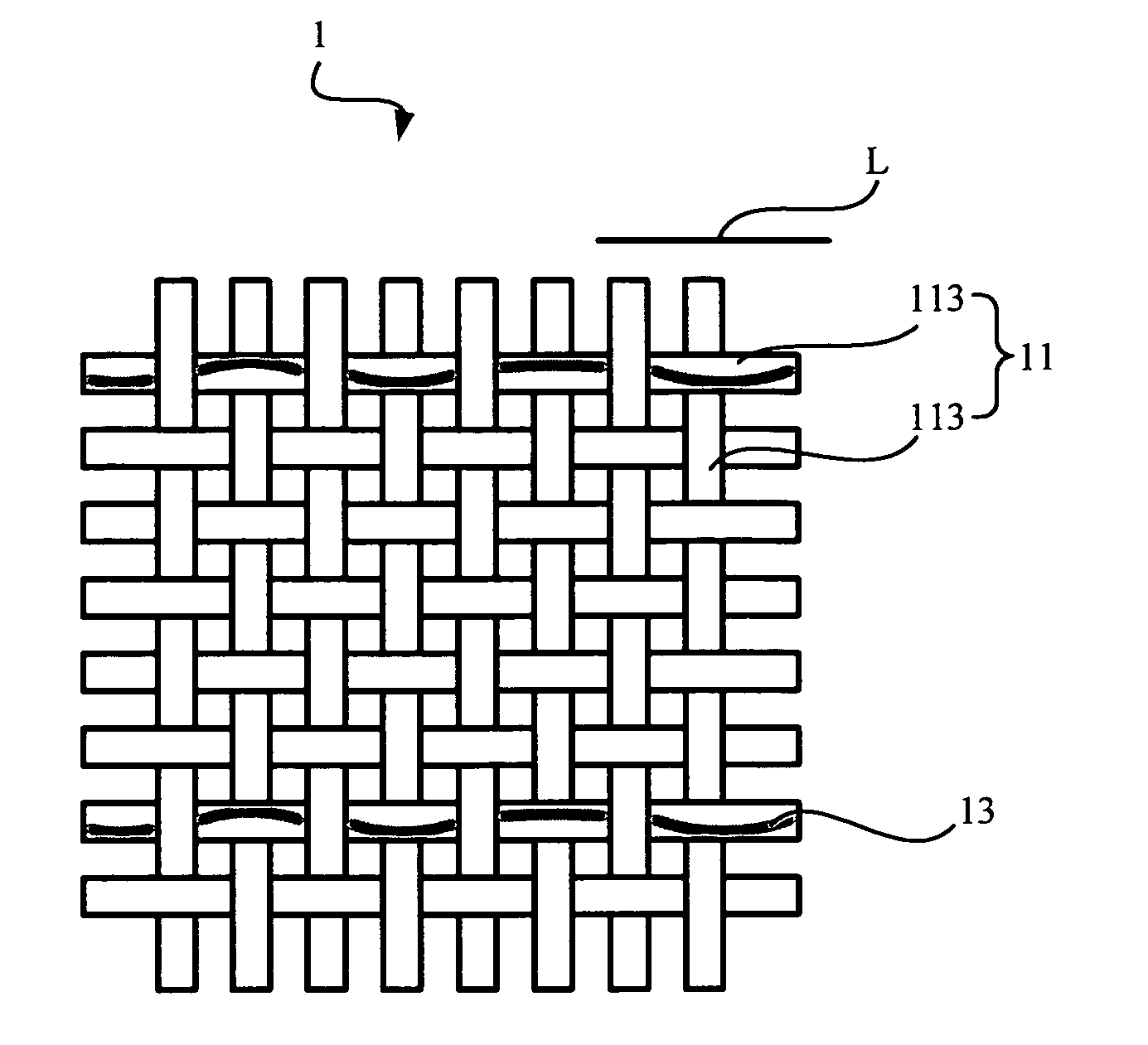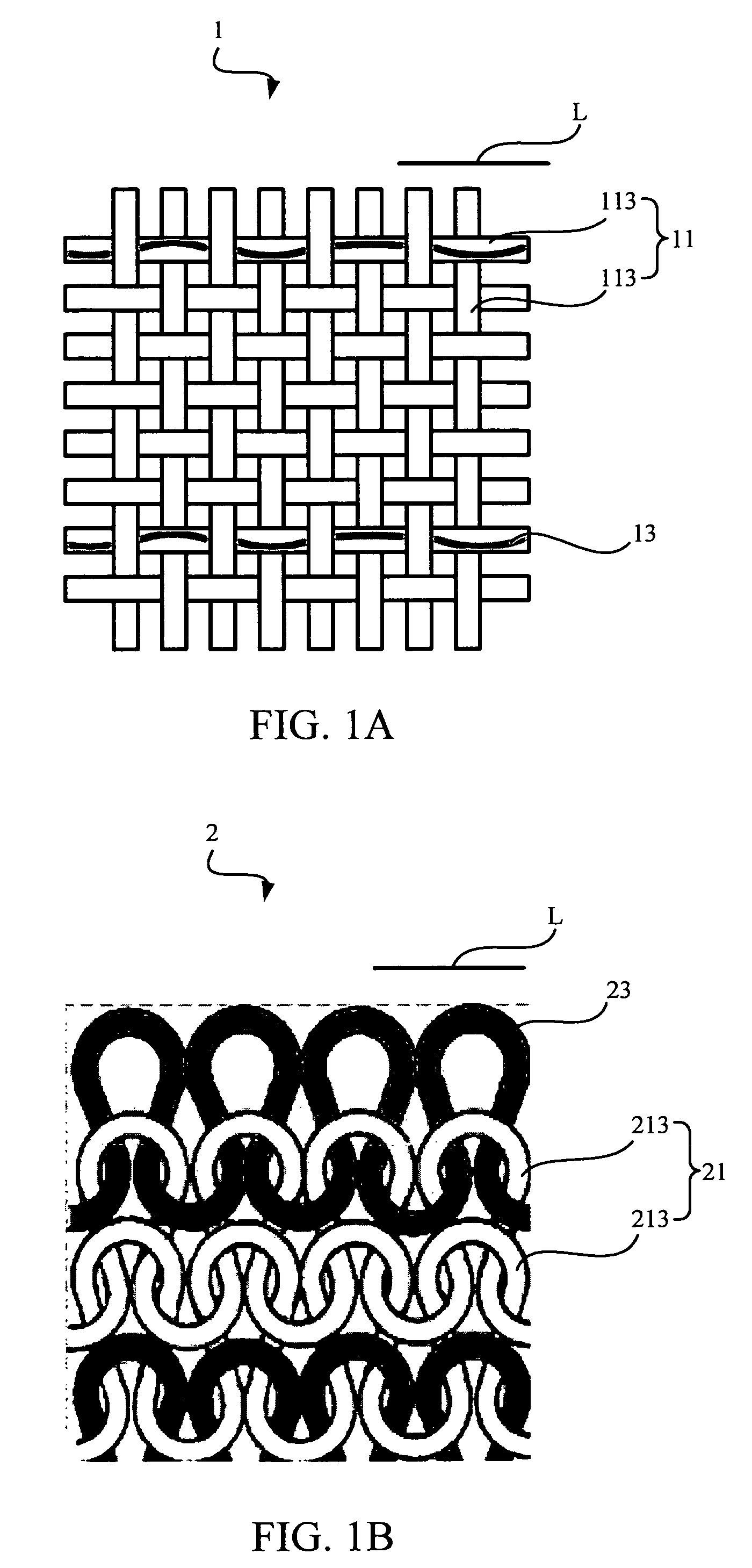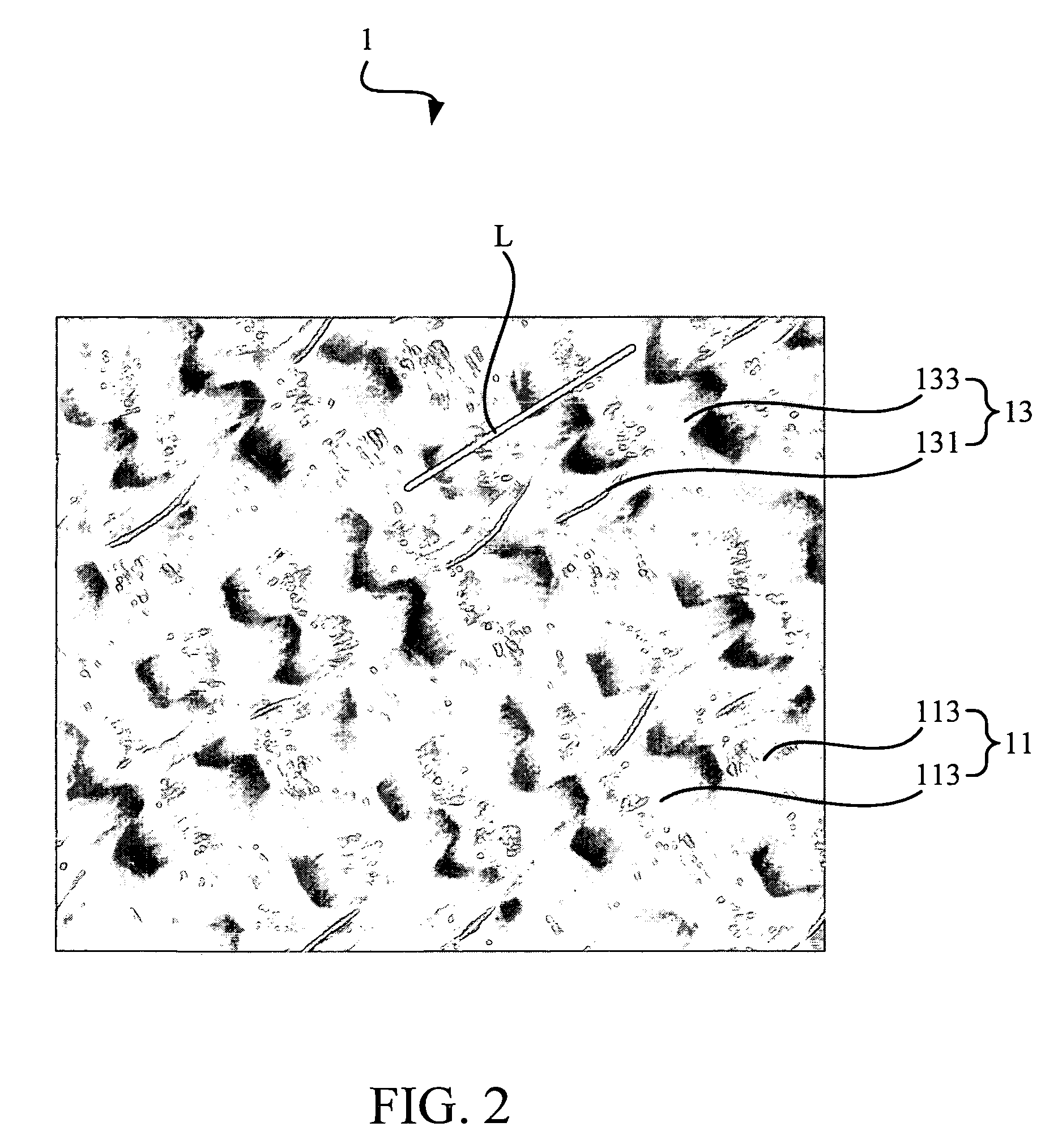Fabric-based strain gauge
a strain gauge and fabric-based technology, applied in the field of strain gauges, can solve the problems of reducing mobility, difficult to mount on a living body, such as the human body or the limbs of animals, and failure to perform monitoring
- Summary
- Abstract
- Description
- Claims
- Application Information
AI Technical Summary
Benefits of technology
Problems solved by technology
Method used
Image
Examples
Embodiment Construction
[0026]As used herein, the term “fiber” refers to staple fiber (short fiber) or filament (long fiber).
[0027]According to a preferred embodiment of the invention, the strain gauge includes a fabric base and at least one conductive yarn.
[0028]The fabric base is weaved with a plurality of non-conductive yarns, and the fabric base thereon defines a sensing direction. In an embodiment, the plurality of non-conductive yarns have elasticity, so that the strain gauge can fit to any kind of surface, such as chest, elbow, and knee, to enhance the sensitivity and accuracy of measurement. For example, the non-conductive yarns can be natural elastic yarns, or synthetic elastic yarns. However, in another embodiment, parts of the plurality of non-conductive yarns can optionally have different elasticity. In yet another embodiment, only one or several of the plurality of non-conductive yarns have elasticity.
[0029]Furthermore, each of the conductive yarn is gimped with one of the non-conductive yarns...
PUM
| Property | Measurement | Unit |
|---|---|---|
| diameter | aaaaa | aaaaa |
| diameter | aaaaa | aaaaa |
| constant resistance | aaaaa | aaaaa |
Abstract
Description
Claims
Application Information
 Login to View More
Login to View More - R&D
- Intellectual Property
- Life Sciences
- Materials
- Tech Scout
- Unparalleled Data Quality
- Higher Quality Content
- 60% Fewer Hallucinations
Browse by: Latest US Patents, China's latest patents, Technical Efficacy Thesaurus, Application Domain, Technology Topic, Popular Technical Reports.
© 2025 PatSnap. All rights reserved.Legal|Privacy policy|Modern Slavery Act Transparency Statement|Sitemap|About US| Contact US: help@patsnap.com



